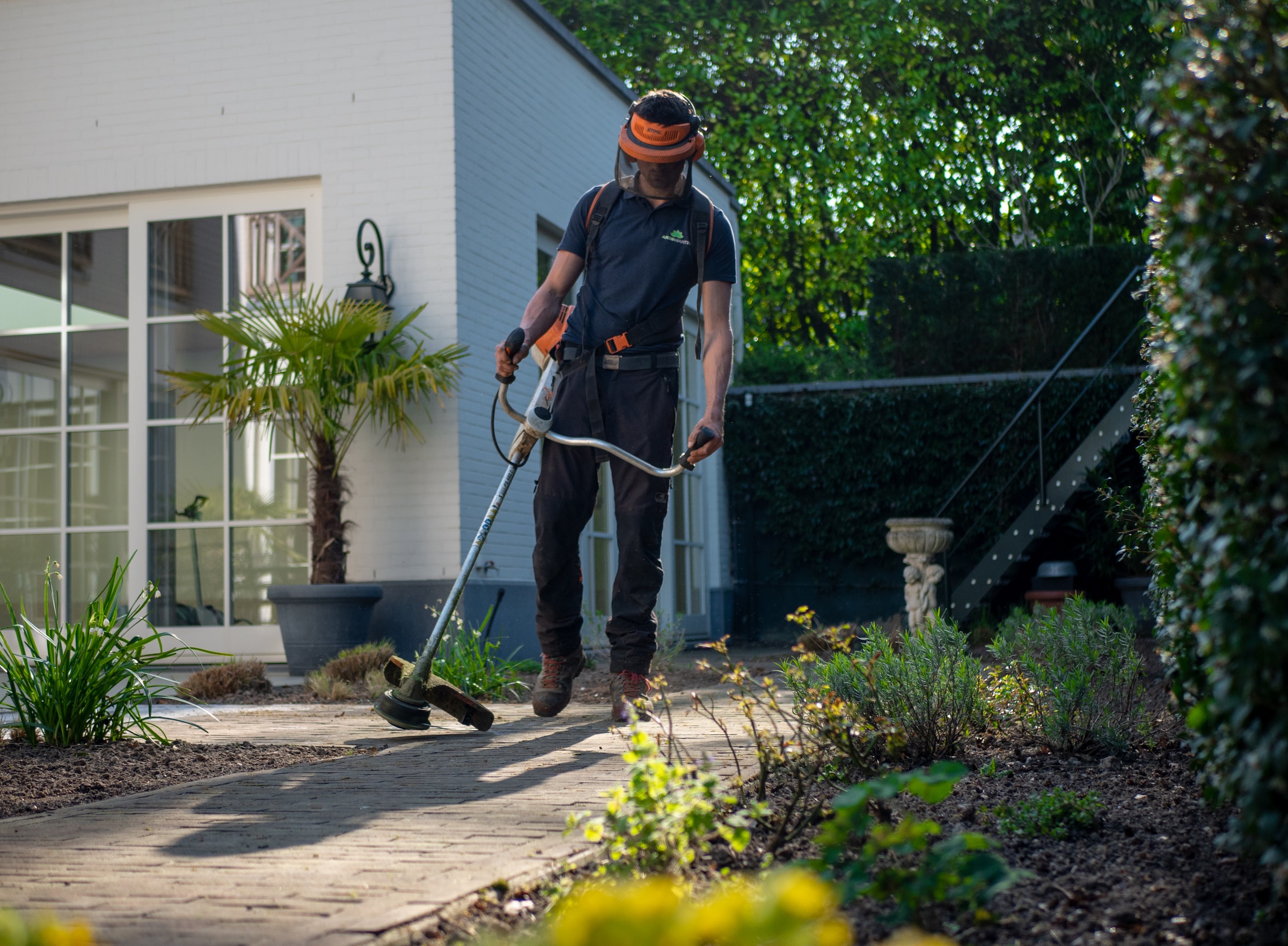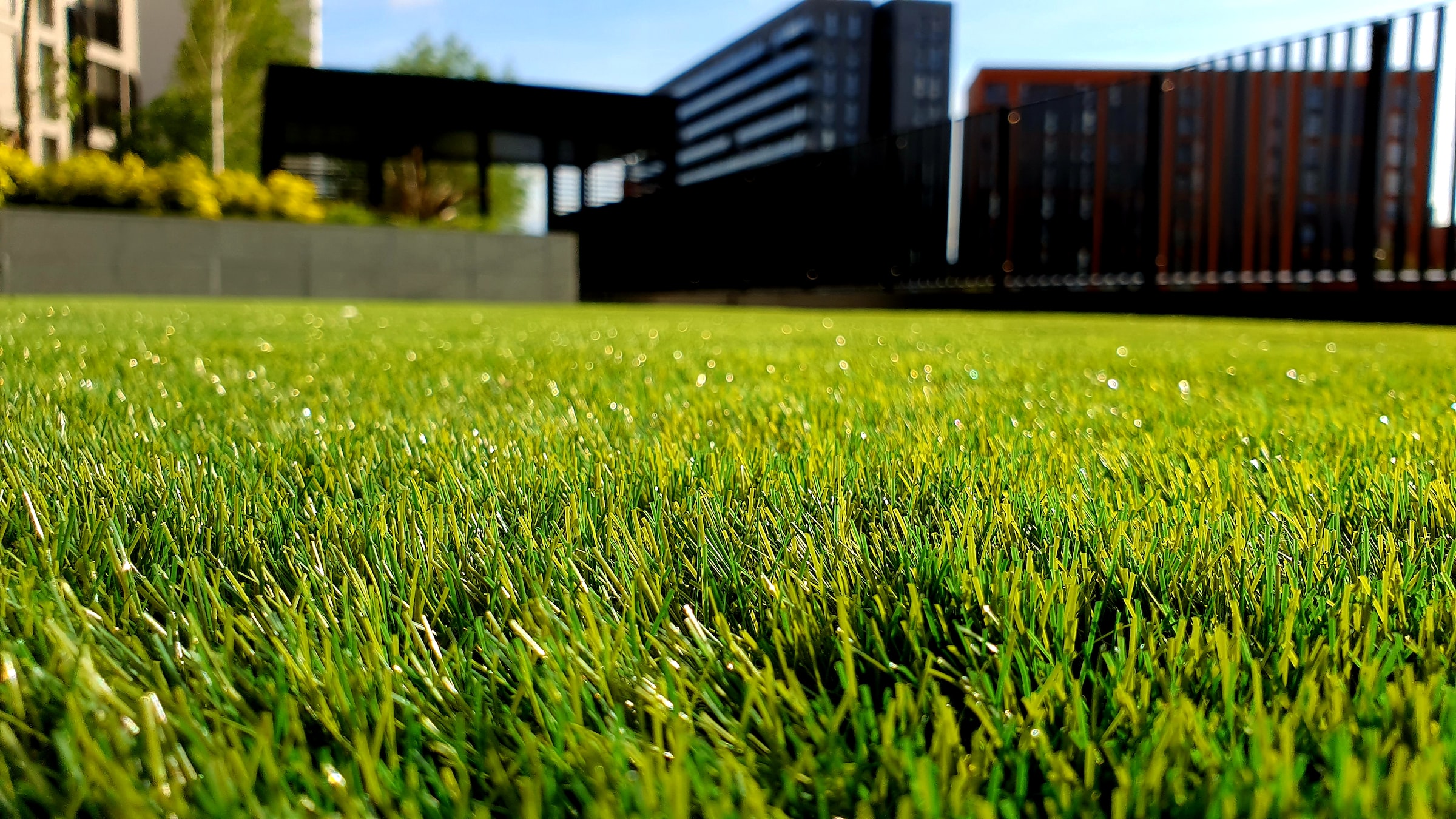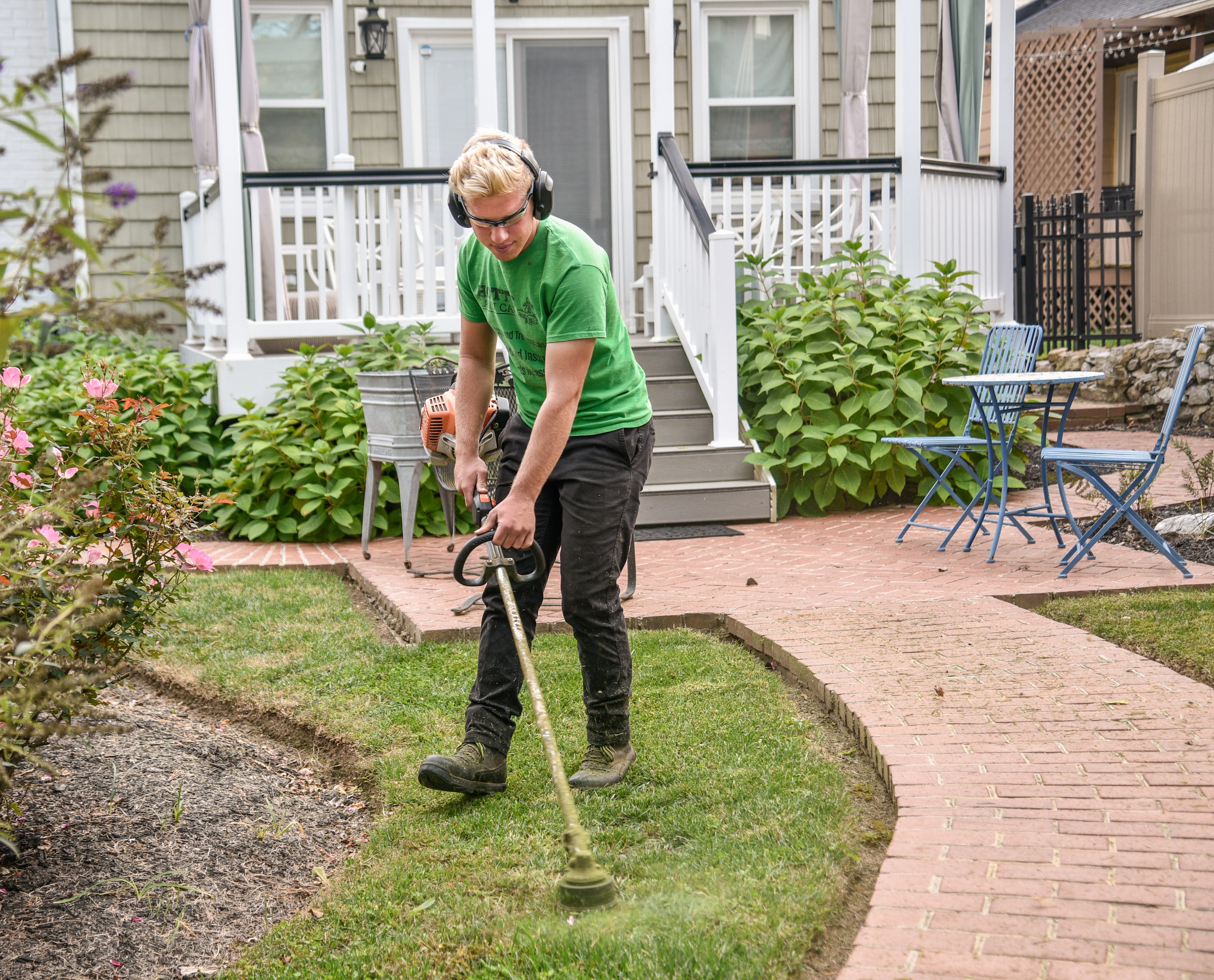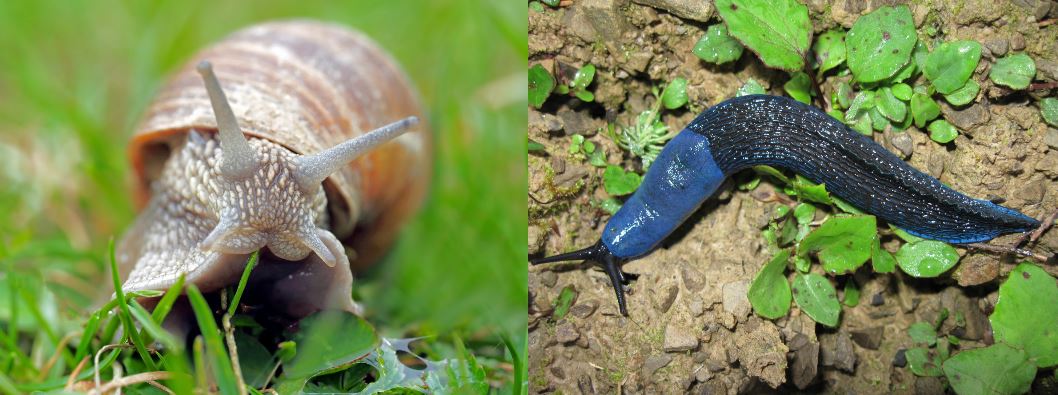Beauty standards for lawns mean a uniformly dark green surface. But what can be done to prevent this beautiful carpet from becoming matted and succumbing to moss? We give you 5 tips for a well-maintained lawn. Grass areas play an important role in garden design. They create open spaces and invite you to play or stroll around. The green carpet enhances flowerbeds and solitary shrubs and forms harmonious compositions in combination with stone coverings or other elements.
However, the lawn, as a symbol of nature tamed by the hand of man, requires regular care. Many stress factors, such as too much moisture, drought, overuse, and maintenance errors, put a strain on it. Weeds and moss grow if not enough fertilizer is applied to the lawn or if it is mown too short, if the soil is compacted or if the grass mixture is not suitable for the location and use. Maintenance is the key to a beautiful lawn.
1. Mowing

Frequent mowing puts stress on the grass blades, as the surface area for assimilation is greatly reduced. Private lawns should not be mown to less than four to six centimeters. It is best to cut it shorter in spring and shorter in summer and the shade. Only cut a third of the total length of the blades. If the lawn is to be 4 cm high, mow only when the blades have grown to at least 6 cm.
Only use mowers with perfectly sharp blades. The tips of the cut leaves turn yellow and are more susceptible to disease. The question of which mower to use depends on the philosophy of each individual. Rotary mowers with a collection bag are currently the most popular machines. These machines have a useful side effect: thanks to the suction effect of the ventilation technology, the leaves are also sucked up when mowing in the autumn. The self-cutting robot mower, which leaves small residues, is also in vogue. For a small lawn, a hand-held spiral mower without a collection bag is the best choice. In the past, the cut grass had to be raked up again when there were no collecting bags or mulching mowers. This process is similar to scarifying.
The cut blades can only be left on biologically active soil. Thatching results from the fact that the mowing material is not taken up by the organisms living in the soil. This is particularly the case when microbiological activity is low, and the humus content is insufficient, i.e., on sandy or clayey soils.
2. Scarification
When the grass is thatched, the roots of the blades of grass do not receive sufficient air and water. The surface, which starts out green, quickly turns yellow and does not stand up well to being walked on. In spring or autumn, the soil should be sacrificed to a depth of one or two millimeters with a special machine or rake and dethatched. Scarifying also slows down the spread of weeds and moss. Run the rake at right angles to the direction in which you want to scarify. Then pass the scarifier again in a direction perpendicular to the first pass. In order to remove even the finest elements, pass the mower again.
3. Aerating and sanding

It is particularly important to aerate clayey or compacted soils. Otherwise, the grass blades will not develop sufficient roots, will turn yellow, and will not be strong. When aerifying, about 50 soil tappings of about 8-10 cm per square meter are removed from the surface of the lawn with a spading fork, and the resulting holes are then filled with washed sand.
4. Overseeding
In bare spots where growth is sparse, reseed with a suitable grass mixture (e.g., shade grass in shady areas). Broadcast the seeds, half in one direction and the rest perpendicularly. Then rake the surface. If the soil has been spread before, it is essential to systematically look for stones so that they are not picked up later by the mower. Pack the surface and keep it moist for a fortnight so that the sprouts do not dry out.
5. Spreading fertilizer

As with sowing, spread the long-lasting fertilizer on the fly, rather in small quantities in pairs than too much at once. The golden rule is: in spring and August, a handful (40 g) per square meter. A heavily used or frequently mown lawn needs more fertilizer (extra ration in June). Regular application is especially important for large areas. A fertilizer spreader makes this easier. A lawn that is not uniformly green is not beautiful.
Looking for help?
For all your earthmoving and lawn care needs, contact The Groundsman now. With over 28 years of experience in the industry, they are the leading experts in earthmoving in the greater Melbourne Eastern suburbs. Their team of experienced professional deliver safe and reliable earthmoving services. They’ll get the job done, whether it is to remove rubble, earth, or soil. So what are you waiting for? Give them a call for more information!




1 thought on “Top 5 Tips For Good Lawn Care”